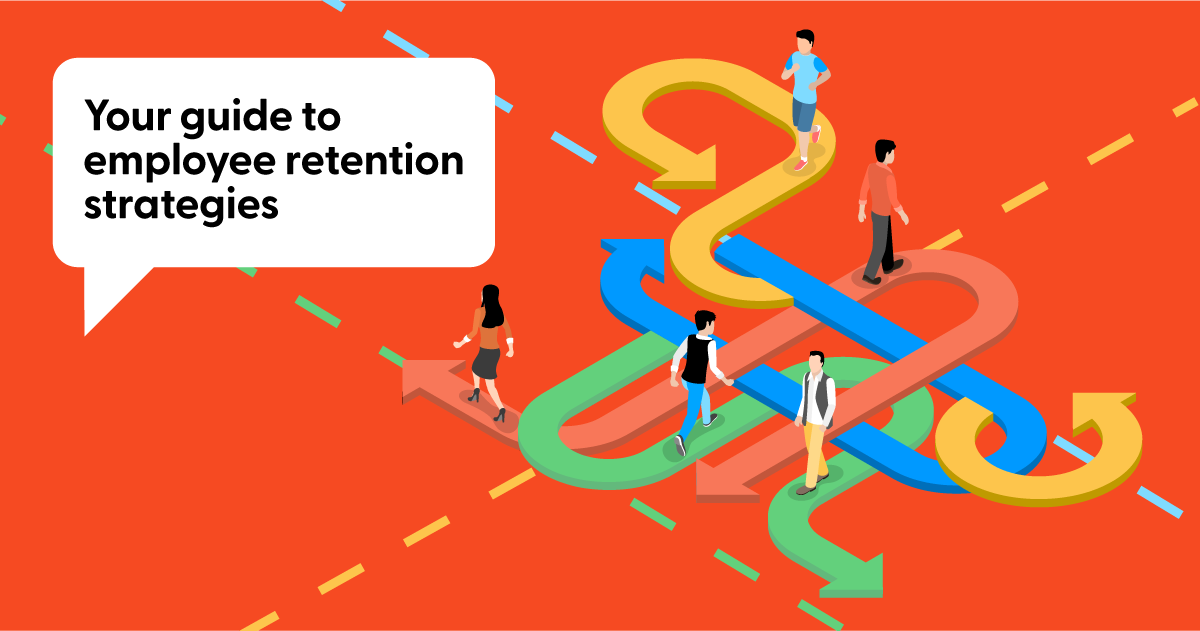Things get even trickier when high-performing employees leave. They’re often the ones most likely to find new jobs quickly, possibly with your competitors. Finding replacements who can match their skills and experience can be tough.
In this article, we’ll explore some of the best ways to create an effective employee retention programme and keep your top talent on board.
Take the initiative
Ask each employee what they enjoy about their job and what would make it even better. Don’t wait for exit interviews to discover problems and start offering improvements. Explain that you value your employees and don’t want to lose people, so you’re keen to identify opportunities to boost job satisfaction.
Promote learning and development
In most economic times, opportunities to grow are often more valued than extra financial rewards. They can also be more affordable to provide. Mentoring and cross-functional project teams are highly effective ways for employees to develop additional skills. It also makes your organisation more resilient. Working with each employee to map out a potential career path within your organisation provides focus for development and creates a mindset of long-term employment.
Build a culture of open communication
From passing conversations and regular one-on-ones to team meetings and town hall events, it’s important that everyone can be open, honest, actively listening and unafraid to speak up. This needs to be leadership led, so it helps to provide leaders with training in all types of communication. This can include questioning, listening, responding, conflict management, verbal recognition, big picture updates and more.
Review recruitment strategies
It’s not always obvious, but one of the most effective strategies is to recruit people who are more likely to stay longer in the first place. Look for applicants with:
- A good fit for the role’s requirements, your team and your organisation’s culture
- A track record of long periods with previous employers
- A focus on learning and development
Create meaningful work opportunities
Employees are more likely to stay when they feel their work has a worthwhile purpose, makes good use of their skills and provides challenges. To make this happen, you should discuss these things with each employee, understand their current perceptions and identify ways to make work more meaningful. This might involve regularly adjusting roles, removing obstacles and encouraging them to discuss opportunities with you rather than waiting for them to happen.
Focus on the whole person
Look for ways to better support employee health and wellbeing. Consider running guest-speaker workshops on topics like stress management, financial management, exercise and nutrition. Provide people leaders with training on encouraging open conversations and helping individuals to improve their wellbeing.
Reward wins and learn from losses
A simple “thank you” is one of the most powerful ways to recognise everyday successes. For bigger wins it’s important that the reward is something the recipient will value highly. For one person that might be a growth opportunity while another might prefer a cash payment to ease immediate financial concerns.
When an employee’s performance doesn’t meet expectations, it helps to treat it as a learning opportunity rather than something to punish. Constructively review what happened together, identify underlying causes and develop plans to address them.
Allow benefit choice and personalisation
Imagine if you gave everyone in your family the same gift on their birthday. Someone might like theirs but chances are the rest would feel a bit let down. Understanding what’s important to each employee and personalising rewards to suit is a great way to boost employee retention. One way to get this right is to offer a wide range of benefits that employees can choose from. The Boost rewards platform does this really well. It’s also surprisingly affordable and easy to set up for your organisation. To learn more, check out the Boost employee benefits platform
